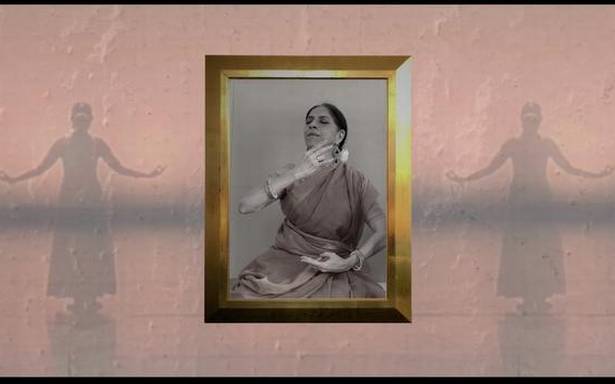ART NEWS
Shaping a cultural economy
How four dancers have used the pandemic to explore financial sustainability in the arts world
Dancers, both classical and folk, urban and rural, have endured severe economic and artistic challenges during the pandemic. Many, however, have slowly embarked on imaginative journeys to reconstruct, reinvent, and reposition their work to align with the emerging modernity and altered performance landscapes.Crucial to this process is the devising of models that ensure sustainability of performing arts and artistes. Dancers are beginning to see the need for realistic frameworks and practical strategies to reconnect with paying audiences and to navigate their dual existence in online and offline performing spaces.More than ever, there is an urgency to recognise not so much the formal as the large non-formal creative sector and, therefore, to develop sustainable cultural economics models around this idea. It is also about recognising that potential target audiences today are under 50 years of age and are mostly online and not offline. Even when auditoriums open, therefore, online performances will continue to remain attractive for funders and sponsors. This is not to say that astute marketing strategies will not materialise offline as well. The lacunaeTraditionally, the performing arts in India have never applied economic analysis to their industry, with funding, ticketing and sponsorship being mostly ad hoc affairs. In turn, the government has made no effort to explore how culture might be structured as an economic sector; or to map and match the ‘producers’ of the cultural product (performers) and the ‘consumers’ of it (audiences); or to organise state-of-the-art production spaces, technical support, and other infrastructure that can sustain this economy. What we have instead are a few attempts that are more about ensuring the sustainability of individual practices and have low wider impact, but they are a good start. Of these, the work of four artistes is worth mentioning: dancer-choreographer Aditi Mangaldas, dancer-producer Anita Ratnam, contemporary dancer Surjit Nongmeikapam (Bonbon), and dancer-choreographer Parwati Dutta. Their work during the lockdown has included not just creative revivals of old works and the creating of new ones but also active engagement with patrons to ensure sustained interest in their art and financial contributions to it. Their initiatives could inspire bolder models for monetising the performing arts.Aditi Mangaldas, a first-generation performing artiste, is from a business background. With the team of artistes in her dance company, Drishtikon, she wanted to build a ‘creative component’ during the pandemic. While financially sustaining her team, she initiated a strategy that demanded discipline and immersion from them. “At 10.30 a.m. every day the artistes are there online with their dancing bells, and encouraged to re-imagine their aesthetics,” she says. Aditi also repackaged several old productions as films and marketed them to essentially international networks. This model, by skilfully weaving technology with art, promises to sustain a global market even in a post-pandemic future. Aditi also conducted inventive workshops and participated in other offline interactions as ways to support her organisation and the artistes associated with it, both economically and creatively.Anita Ratnam too comes from a business background and is a first-generation professional dancer. “My first experience of cultural economics was in the 1980s, when I was the only television producer to present the Festival of India in the U.S.,” she says. She was also inspired by her guru Adyar K. Lakshman, who acquired the backing of an affluent Tamil diaspora, especially Sri Lankan Tamils, in Australia and Canada. Anita has used the idea of the diaspora to identify potential audiences and artistes. Her study showed that viewers were young, and Indians plus NRIs. So the performances were a mixed bag of classical and contemporary. She used the idea of being confined at home to create themes like ‘Boxed’. Her recent series, ‘Andal’s Garden’, encouraged dancers from various genres worldwide to explore the same theme.Anita also offers hand-holding to dancers for technical aspects like camera and light angles and for aesthetic aspects like costumes and make-up for online shows. Such mentorship creates a larger base of performers and improves the quality of the product, thus making paid shows more feasible.Renewing connectionsUnlike Anita and Aditi, Surjit Nongmeikapam and Parwati Dutt are first-generation dancers from middle-class families. Instead of honing his skills in classical Manipuri dance, Surjit travelled to Bengaluru to learn Kathak and contemporary dance at Maya Rao’s Natya Institute of Kathak and Choreography.“The pandemic threw up challenges of survival. I reached out to several individuals and organisations for donations, many of them from my international circuit, to feed the performing artistes in my organisation, Nanchong Art Foundation,” says Surjit. He renewed connections with patrons and strengthened stakeholders to sustain his work and organisation. “I work with nine or ten creative professionals — dancers, writers, martial artists, musicians. The contemporary is not a recognised genre, but in the lockdown, I had opportunities to be a part of webinars and virtual festivals,” he says. Surjit’s last production before the lockdown was the 30-minute ‘1 Sq Ft’, a powerful narrative of human displacement, war and violence, which ironically echoed the crisis of migrant workers that would soon be enacted across the country.Surjit’s target audience is young, and he is conscious that his work might appeal more to the educated, urban and thinking consumer, but equally that could perhaps make his online sustainability that much smoother as well.Pandemic dynamicsParwati Dutta grew up in Bhopal but started her work in the completely unknown cultural terrain of Aurangabad in Maharashtra. “I built my institute, Mahagami Gurukul, from ground zero and also partnered with the Mahatma Gandhi Mission.”The pandemic motivated her to approach her patrons for financial help. “I understood the impact of my work when the people of Aurangabad eagerly supported my donation campaign for artistes and continued to be a part of my online talks on the arts. I focused on the pandemic’s psychological impact in my talks,” she says. Such was the influence on the community linked to Mahagami Gurukul that an engineer was inspired to create a dictionary on sculpture called Shilp Kosh, she says.Parwati also created an outreach programme in a rural area called Baagh Talaaw, near Aurangabad, with a few settlements of itinerant grazers. She also organised for citizen groups to interact with folk performers of the area, engaging both with their art forms and via survival kits. “Cultural economics is about investing in creating strong local patronage by building a sense of ownership. That is the way forward. I believe in creating the taste for art among audiences. Their support during the pandemic indicated their involvement in our institution and illustrated that they are part of our larger family,” says Parwati.The writer is a Kathak exponent and cultural critic.











